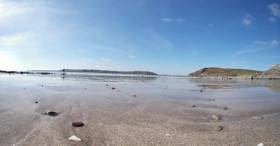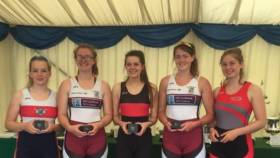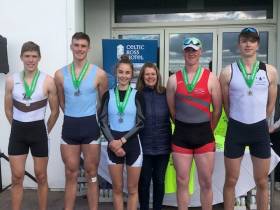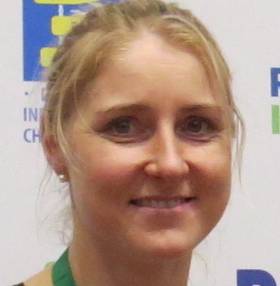Displaying items by tag: Ireland
The Irish state is particularly aware of the threat climate change poses through sea level rises, given its island status, Tánaiste Simon Coveney has said.
As The Irish Times reports, Mr Coveney and Minister for the Marine Michael Creed are leading the Government’s participation in the 2019 SeaFest and Our Ocean Wealth Summit in Cork this week.
Ahead of the conference, Mr Coveney welcomed the leaders and ambassadors from more than 30 island states such as the Seychelles, Mauritius, Antigua, Haiti, Barbados, Fiji and Papua New Guinea.
“As a small island, Ireland understands the threats climate change poses to our friends in the Pacific, Caribbean, Atlantic and Indian oceans. It threatens their very existence,” Mr Coveney said.
“Ireland strongly believes that we can only address this challenge of a generation if we take strong climate justice approach. Emphasising the needs and realities of those who have the most to lose, yet have done least to contribute to the problem, will always be a centerpiece of our approach.”
Mr Coveney said Ireland wants to give leadership on the important issues of protecting the seas and maritime environment and countering climate change.
For more on the conference at the Ocean Summit, click here.
Irish Crews To Fore at London Met Rowing Regatta UPDATE
#Rowing: Irish crews were prominent at London Metropolitan Regatta at Dorney Lake and took some of the biggest prizes on offer.
The composite of Katie Shirlow and Lisa Murphy (NUIG), Niamh Casey (Skibbereen), Clara O’Brien (Castleconnell) and Rachel O’Leary (UCC) won the Championship coxed Four.
The UCD men’s crew of Shane O’Connell, Andrew Goff, Shane Mulvaney and David O’Malley won the Championship Four.
On Sunday, Niall Beggan of Commercial won the Championship Single Sculls and the under-23 women’s composite again won the Championship coxed four.
London Metropolitan Regatta, Dorney Lake (Selected Results; Irish interest; winners unless stated)
Men
Four – Open - Championship: UCD 6:24.45. Open – Tier Two: St Michael’s 6:38.62.
Four, coxed – Open: 1 NUIG 6:56.81, 2 UCD B 7:00.99. Open, Academic: Univ of Limerick 7:15.26.Sculling, Quadruple – Tier Two: Queen’s, Shandon, UCC 6:32.47
Single, Open – Tier Two: Univ of Limerick (K Mannix) 7:37.80.
Women
Four, coxed – Championship: Castleconnell, Skibbereen, NUIG, UCC 7:37.91.
Pair – Tier Two: Anna Liffey (D Maguire, C Dempsey) 8:10.25. Tier Three: Cork (J Duggan, C O'Sullivan) 8:07.63
Sunday
Men
Eight – Open - B Final: 1 UCD 6:04.76; 2 Cork 6:09.17
Four, coxed – Open, Academical – Tier Two: Queen’s, Belfast, Carlow, NUIG, UCC (R Corrigan, J Keating, D Breen, B O’Rourke; cox: A Humphries-Griffiths) 6:53.77.
Pair – Open – Tier Two: Cork (P Beechinor, M Cronin) 7:18.36
Sculling – Quadruple, Open: Lee (A Mahony, P Leonard, A Sheehan, D Kelly) 6:34.80
Single, Open: Commercial (N Beggan) 7:29.59. Open Single – Tier Two: Univ of Limerick (K Mannix) 7:38.56. Tier Four: Univ of Limerick (M Fanning) 8:16.55
Women
Four, coxed - Championship: Skibbereen, NUIG, UCC (K Shirlow, L Murphy, S O’Donnell, N Casey; cox: A Humphries-Griffiths) 7:28.16.
Sculling,
Double – Open – Tier Two: Lee (M Kidney, A Lynch) 7:59.08. Single – Tier Three: NUIG (S O’Connor) 8:30.50
McCarthys Shine at European Rowing
#Rowing: Jake and Fintan McCarthy produced a brilliant final sprint to take a place in the semi-finals of the lightweight double sculls at the European Rowing Championships in Lucerne today. Just two crews would go through, and Italy led the way. The world silver medallists stayed ahead of a tight pack of challengers, with Ukraine closest as they came to the line. But the McCarthy twins upped their rate and pushed Ukraine out of a qualifying spot by a quarter of a second.
Lydia Heaphy and Denise Walsh, a new crew, did very well to qualify directly for their semi-final. They took the third and final qualifying spot in their heat. Switzerland and Britain fought it out at the head of the field, with Ireland holding off Spain and Sweden.
European Championships, Lucerne, Day One (Irish interest)
Men
Double Sculls – Heat One (First Two to A/B Semi-Finals; rest to Repechages): 1 Ireland (P Doyle, R Byrne) 6:26.53, 2 Romania 6:29.62.
Lightweight Double Sculls – Heat Two (First Two to A/B Semi-Finals; rest to Repechages): 1 Italy (S Oppo, P Ruta) 6:14.73, 2 Ireland (J McCarthy, F McCarthy) 6:16.07; 3 Ukraine 6:16.32.
Lightweight Single Sculls – Heat One (First Two to A/B Semi-Finals; rest to Repechages): 1 Italy (M Goretti) 7:05.54, 2 Switzerland (J Schaeuble) 7:06.73; 6 Ireland (G O’Donovan) 7:34.73.
Women
Single Sculls – Heat Three (First Two to A/B Semi-Finals; rest to Repechages): 1 Ireland (S Puspure) 7:30.65, Britain (V Thornley) 7:35.35
Lightweight Double Sculls – Heat Three (First Three to A/B Semi-Finals; rest to Repechages): 1 Switzerland 6:57.58, 2 Britain 6:58.61, Ireland (D Walsh, L Heaphy) 7:14.55.
#Rowing: Sanita Puspure opened her account at the European Rowing Championships in Lucerne with a good win. The world champion in the single sculls was given a good test in the third heat by Victoria Thornley of Britain, who stayed with her until the final stages. The two took the semi-final places. Jeannine Gmelin of Switzerland and Austria's Magdalena Lobnig won the other heats. They took silver and bronze, in that order, at the World Championships in 2018.
Earlier, Ronan Byrne and Philip Doyle had won their heat of the double sculls. Gary O’Donovan faces into a repechage in the lightweight single sculls. He took sixth in his heat.
European Championships, Lucerne, Day One (Irish interest)
Men
Double Sculls – Heat One (First Two to A/B Semi-Finals; rest to Repechages): 1 Ireland (P Doyle, R Byrne) 6:26.53, 2 Romania 6:29.62.
Lightweight Single Sculls – Heat One (First Two to A/B Semi-Finals; rest to Repechages): 1 Italy (M Goretti) 7:05.54, 2 Switzerland (J Schaeuble) 7:06.73; 6 Ireland (G O’Donovan) 7:34.73.
Women
Single Sculls – Heat Three (First Two to A/B Semi-Finals; rest to Repechages): 1 Ireland (S Puspure) 7:30.65, Britain (V Thornley) 7:35.35
Ireland Pair to Miss Europeans but Set For World Cup
#Rowing: Aifric Keogh has had to withdraw from the Ireland team for the European Championships at the end of the month because of illness. The Galway woman was to form a pair with Monika Dukarska in Lucerne (May 31st to June 2nd), but this crew will now travel to the second World Cup in Poznan, Poland on June 21st to 23rd. A women’s four will also be entered in Poznan, which was not originally pencilled in as an event for Ireland crews.
Silver in Thriller For Ireland at European Junior Rowing
#Rowing: Ireland took a silver medal in Essen this morning at the European Junior Championships. Germany held on as Ireland mounted a sprint finish which might have taken gold – it fell short by .3 of a second.
The Ireland coxed four of Matt Gallagher, James O’Donovan, Jack Dorney, John Kearney and cox Leah O’Regan won their heat ahead of Germany, who took the race to them this time. The hosts led through most of the 2,000 metres, but could not get more than half a length ahead of the Irish.
Turkey came through for bronze, ahead of Russia.
European Junior Championships, Essen, Germany (Day Two, Irish interest)
Men Junior Four, coxed – A Final: 1 Germany 6:19.88, 2 Ireland (M Gallagher, J O’Donovan, J Dorney, J Kearney; cox: L O’Regan) 6:20.18, 3 Turkey 6:22.12.
Ireland Win Heat at European Junior Rowing Championships
#Rowing: Ireland’s coxed four had the perfect start to their challenge at the European Junior Championships in Essen in Germany. The crew of Matt Gallagher, James O’Donovan, Jack Dorney, John Kearney and cox Leah O’Regan won their heat to secure direct qualification for the A Final. In good conditions, Germany and Ireland got out in front and held on to the two direct qualification places to the finish line. Ireland, in lane five, extended a marginal lead at halfway to just over a length at the end.
European Junior Championships, Essen, Germany, Day One (Irish interest)
Men
Junior Four, coxed (First two directly to A Final; rest to Repechage): 1 Ireland (M Gallagher, J O’Donovan, J Dorney, J Kearney; cox: S O’Regan) 6:31.68, 2 Germany 6:35.47; 3 Ukraine 6:37.33.
Ireland Rowers On Pace but Out of Medals in Italy
#Rowing: Ireland crews contended in four A Finals on Sunday in the Memorial Paolo d’Aloja in Italy. There were two close-up fourth places: the lightweight men’s double of Jake McCarthy and Fintan McCarthy lost bronze to Portugal in the closing stages of their race, while the novel four of Tara Hanlon, Sanita Puspure, Aifric Keogh and Monika Dukarska fought to prevent a 1-2-3 of Romania crews in their race but missed out. The four of Claire Feerick, Emily Hegarty, Aileen Crowley and Claire Lambe were fifth.
Philip Doyle and Ronan Byrne were on the pace in the men’s double, but finished fifth, while Cliodna Nolan and Lydia Heaphy took sixth in the lightweight women’s double sculls.
Memorial Paolo d’Aloja, Piediluco, Italy, Finals (Irish results; selected)
Saturday
Men
Double – A Final: 3 P Doyle, R Byrne 6:33.90.
Lightweight Double Sculls – A Final: 3 F McCarthy, J McCarthy 6:38.43.
Women
Pair – A Final: 5 A Keogh, M Dukarska 7:33.3; 7 A Crowley, E Hegarty 7:42.36. B Final: 3 C Feerick, E Lambe 7:45.41.
Lightweight Double – A Final: 6 C Nolan, L Heaphy 7:48.91.
Single – A Final: 1 S Puspure 7:58.89.
Sunday
Men
Double Sculls – A Final: 5 P Doyle, R Byrne 6:41.56.
Lightweight Double Sculls – A Final: 4 F McCarthy, J McCarthy 6:45.55.
Women
Four – A Final: 4 T Hanlon, S Puspure, A Keogh, M Dukarska 7:05.53; 5 C Feerick, E Hegarty, A Crowley, E Lambe 7:06.98.
Lightweight Double Sculls – A Final: 6 C Nolan, L Heaphy 7:57.33.
Gold for Puspure and Bronze for Ireland Doubles in Italy
#Rowing: Sanita Puspure and two Ireland men’s crews took medals on the first day of the Memorial Paolo d’Aloja in Italy today. Puspure is world champion in the single sculls and she continued her run with a good win.
The men’s double of Ronan Byrne and Philip Doyle were another success story from the World Championships in 2018 – they finished ninth. They took third place in their A Final, which was won by Romania.
The bronze medal for Jake and Fintan McCarthy came in a lightweight doubles final won by Italy, with Belgium second – these crews took silver and bronze at last year’s World Championships.
The Ireland pairs of Aifric Keogh and Monika Dukarska and Aileen Crowley and Emily Hegarty took fifth and seventh in their final.
Lough Rinn Grand League Regatta, scheduled for tomorrow (Sunday), has been cancelled. The organisers had hoped to hold the event, and told clubs that some racing would not go ahead. But after receiving a forecast from Met Éireann of a powerful, gusting wind, they changed their decision.
Memorial Paolo d’Aloja, Piediluco, Italy, Saturday Finals (Irish results; selected)
Men
Double – A Final: 3 P Doyle, R Byrne 6:33.90.
Lightweight Double Sculls – A Final: 3 F McCarthy, J McCarthy 6:38.43.
Women
Pair – A Final: 5 A Keogh, M Dukarska 7:33.3; 7 A Crowley, E Hegarty 7:42.36. B Final: 3 C Feerick, E Lambe 7:45.41.
Lightweight Double – A Final: 6 C Nolan, L Heaphy 7:48.91.
Single – A Final: 1 S Puspure 7:58.89.
Ireland in Three Finals at World Rowing Awards
#Rowing: Sanita Puspure, the O’Donovan brothers and Ireland lightweight coach Dominic Casey have all been chosen as finalists for the World Rowing Awards 2018. Puspure won gold in the women’s single sculls and Paul and Gary O’Donovan won the lightweight double, coached by Casey, at the World Rowing Championships.
Just two crews, along with Puspure, are in the running for Women’s Crew of the Year, while there are four crews in the finals of Men’s Crew of the Year and for Coach of the Year. Casey has reached the final three years in-a-row.
The awards will be presented on November 23rd in Berlin.
Finalists for the 2018 World Rowing Awards
Women’s Crew of the Year
- Caileigh Filmer, Hillary Janssens, Canada, Women’s pair
- Sanita Puspure, Ireland, Women’s single sculls
- Agnieszka Kobus-Zawojska, Marta Wieliczko, Maria Springwald, Katarzyna Zillmann, Poland, Women’s quadruple sculls
Men’s Crew of the Year
- Joshua Hicks, Spencer Turrin, Jack Hargreaves, Alexander Hill, Australia, Men’s four
- Jason Osborne, Germany, Lightweight men’s single sculls
- Johannes Weissenfeld, Felix Wimberger, Maximilian Planer, Torben Johannesen, Jakob Schneider, Malte Jakschik, Richard Schmidt, Hannes Ocik, Martin Sauer (coxswain), Germany, Men’s eight
- Paul O’Donovan, Gary O’Donovan, Ireland, Lightweight men’s double sculls
Para-rowing Crew of the Year
- Perle Bouge, France, Para PR2 women’s single sculls
- Ellen Buttrick, Grace Clough, Oliver Stanhope, Daniel Brown, Erin Wysocki-Jones (coxswain), Great Britain, Para PR3 mixed coxed four
- Annika van der Meer, Corne de Koning, Netherlands, Para PR2 mixed double sculls
Coach of the Year
- Uwe Bender, Germany, Men’s eight
- Dominic Casey, Ireland, Men’s pair, lightweight men’s and women’s double sculls, lightweight men’s quadruple sculls
- Jan Klerks, Netherlands, Para-rowing team
- Laurel Korholz, United States, Women’s four, women’s single sculls
2018 Sustainability Award
- “Pushing for a Clean Sweep”, National Schools Regatta, Great Britain
- “Partnership with Waikato Water Authority”, Rowing NZ, New Zealand
- “Love Where you Row”, Alan Robinson/Schuylkill Navy, United States

































































